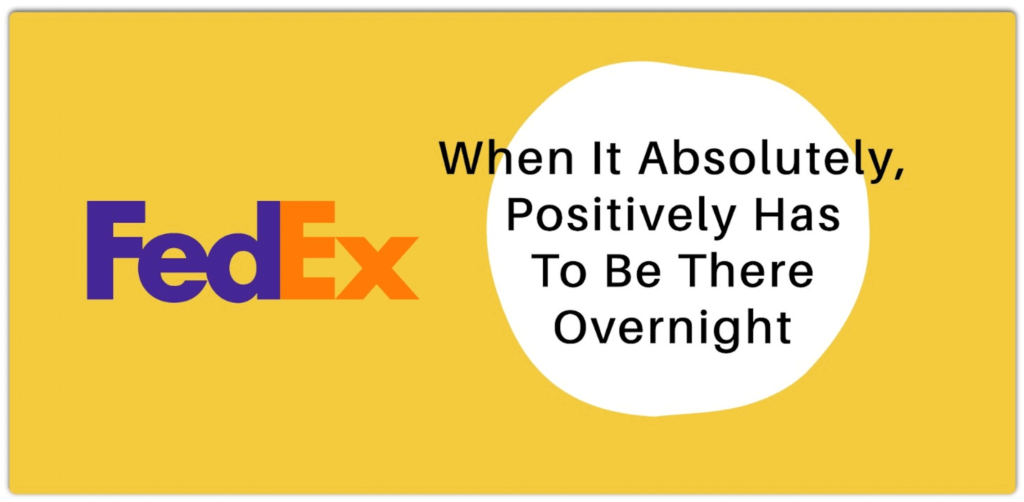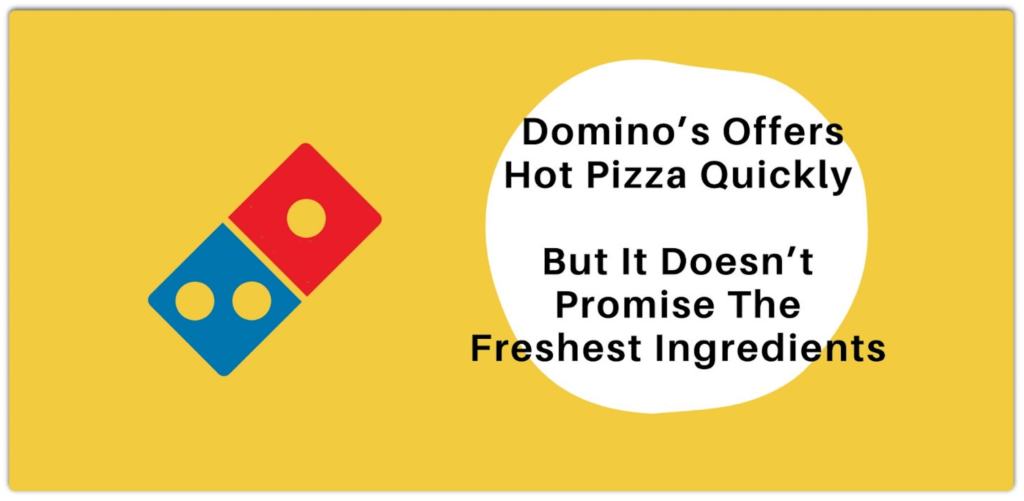We all know that content is king. Quality content helps you grow your brand and engage with your target audience. But it isn’t easy to create quality content on a consistent basis. It’s all too easy to get off-topic or create content that doesn’t resonate with your followers. Luckily, you can avoid these issues by developing a solid content strategy framework.
But what elements are necessary for an effective content strategy? Recently, Gianni Cara spent 16 hours in a room with brand consultants worth $1000/hr to learn about their winning content strategies. He came away with eight elements that are essential for developing a $150M content strategy framework. In this article, we’ll dive deeper into those elements to show you how to consistently create content that elevates your brand.
1. Unique Brand Positioning
You can’t develop a content strategy if you don’t know what your brand stands for. Your content strategy should help you strengthen your position in the market. However, if you don’t know what your position is in the first place, then you can’t create content that helps your brand. Therefore, you need to know exactly what your brand does for your customers and what makes it unique from the competition. To do this, you need to determine your unique brand positioning.
But how do you determine your unique brand positioning? Let’s briefly discuss the essential core elements of brand positioning, common mistakes to avoid, and the process that will help you find your brand’s unique position in the market.
3 Core Elements Of Unique Brand Positioning
There are three core elements to unique brand positioning:
- A unique benefit
- Its relevance to customers
- What makes it distinct from your competitors

When customers come across your brand, they need to know why they should buy from you. Do you offer something unique? Can you address their needs? What makes you different from the competition? If you can’t address these issues through your content strategy, your audience won’t be interested in what you offer.
Let’s look at FedEx as an example. The unique benefit the company provides is speedy delivery. This benefit is relevant to customers because everyone wants their packages shipped fast. Furthermore, this benefit makes FedEx unique because many other shipping companies lack the resources to ship and deliver quickly. FedEx doesn’t try to be everything to everyone. The company focuses on this one unique benefit and centers its branding and organization around it.
3 Common Mistakes In Unique Brand Positioning
Furthermore, there are three common mistakes to avoid while determining your brand’s unique position. They are:
- Making vague claims that don’t seem credible
- Focusing on features rather than benefits
- Stating too many benefits
Let’s dive a little deeper into why these are significant mistakes to make.
Mistake #1: Making vague claims that don’t seem credible
In order to attract as many customers as possible, some companies will use vague adjectives or phrases that may seem appealing but don’t mean anything. For example, many authors will say their books are “best selling” but never mention which bestsellers list the book is on. This makes it seem as though the author or publisher is just describing the book in this way to trick people into buying it.

Many companies employ similar tactics by using ambiguous terms such as “honest” or “reliable” to describe their products or services. But these terms don’t tell your customers what your unique benefit is or specifically how you can help them. If you can’t communicate your products’ benefits clearly, then no one will be interested in what you are selling.
Mistake #2: Focusing on features rather than benefits
Your potential customers need to know the exact benefits your brand provides them. Some companies think that if they list all their products’ features, the benefits will immediately be apparent. But that’s not always the case. If you just list your products’ features, your customers may not figure out what the benefits are on their own.

To illustrate this, let’s consider how laptop manufacturers market their products. You’ve probably noticed that many of these companies list the features of each model. For example, they may list that a specific laptop has 32 GB of RAM or a 1 TB hard drive. But most customers don’t understand what that all means. Therefore, these companies also have to translate these features into benefits that the customers will understand. So instead of highlighting the fact that a laptop has 32 GB of RAM, manufacturers emphasize that customers can navigate their browser effortlessly even with hundreds of tabs open. That is a clear benefit and shows the customers how the product will impact their lives.
Mistake #3: Stating too many benefits
You may think displaying a long list of benefits would help your brand, but in reality, the opposite happens. If you list too many benefits (whether true or not), your product may seem too good to be true. Your customers may start asking, “what’s the catch?” and be skeptical of the promises you make to them.

Furthermore, the more benefits you promise, the more your brand must be accountable for. That means you’re more likely to fail at delivering the best experience for your customer. As Gianni puts it perfectly: cheap, fast, and quality can’t go all together. By promising all three benefits, you’re very likely to fail (or be inconsistent with) at least one benefit, which means your customers will have a negative experience.
Think of Dominos as a great example. Dominos promises one thing: pizza made quickly. It doesn’t promise the freshest ingredients or the best prices. If Dominos promised more, it would get in hot water because it can’t deliver on everything. Therefore, it’s important to choose one unique benefit you can consistently provide and stick with it throughout your branding.
6 Steps To Create Your Unique Brand Positioning
So now that you know what to avoid, let’s discuss what you need to do to create your unique brand positioning. There are six steps to this process that will help you understand exactly where your brand fits in your market.
1. Questions: To start brainstorming about what makes your brand unique, write down the answers to the following questions:
- What motivated you to start this brand?
- What difference did you want to make?
- What frustrates your customers the most in your field?
- What do customers want from you?
2. Benefits: Look at the answers you provided for the above questions. Take that information and list three to five benefits your brand offers.
3. Differentiation: Once you list out your benefits, start researching your competition. Take note of all the benefits they offer and cross out anything on your list that overlaps with theirs. Once you are finished, you should only have benefits that are unique to your brand.
4. Ranking: Go through your remaining benefits and rank them in order of importance to your customers.
5. Unique benefit: Pick one benefit from the list that you want your brand to be known for. It should also be a benefit your company can deliver every single time.
6. Unique brand positioning: Finally, create a short, persuasive, and credible promise using the unique benefit you picked. Think of Burger King’s “Have it your way” or Colgate’s “It cleans your breath while it cleans your teeth” as good examples.
Once you have completed these steps, you’ll have your unique brand positioning! Your brand positioning is your brand’s identity. Therefore, you should center all your branding and communications around it as well as your business operations.
Now that you know your brand’s position, let’s continue to the next steps of developing your content strategy framework.
2. Content Pillars
Now that you know your brand positioning, you can start developing your content strategy. The foundation of any good content strategy involves content pillars. Content pillars are the broad topics on which you’ll cement your brand positioning. They are the core themes of your content that showcase what your brand is about and how it is unique in the marketplace.
Content pillars are the core foundational themes of your content strategy. You use these pillars to create smaller pieces of content that can fuel all your marketing channels. Whether you create content on your blog or social media, every piece of content you create should come from your content pillars.
Let’s look at Gianni Cara’s content pillars as an example. Gianni is a brand strategist who helps entrepreneurs grow and develop their companies. His content pillars are branding, copywriting, and audience building. Every piece of content he creates, whether on Twitter or his podcast, comes from these three core topics.
Once you identify your content pillars, don’t stray too far from them. Writing about other topics can confuse your branding and messaging, and you may lose customers as a result.
Furthermore, you should only focus on content pillars that make sense for your brand and industry. For example, a life coach may choose the topic of self-care as a content pillar since discussing self-care is crucial to helping their clients. However, a real estate agent would probably not benefit from using self-care as a content pillar because self-care is not directly relevant to buying or selling a home.
As you develop your content pillars, you can understand why creating your unique brand positioning is an essential first step. Without understanding your brand’s purpose and unique position in the market, it is difficult to create a sturdy foundation for your content strategy.
3. Pillar Point (Ugly First)
Let’s face it: no matter what content pillars choose, that content is probably being created by thousands of similar professionals and brands. So what makes you stand out? This is the next element to focus on in your content strategy framework: determine what makes each content pillar unique.
This is called the “ugly first” step because you’re not focused on how to make your content eloquent or memorable at this point. Right now, you are just developing the core ideas of each content pillar.
So how do you make your content pillars unique? It all goes back to your unique brand positioning. During that step, you should have figured out what makes your brand unique and who your target audience is. Knowing these two things will help you generate unique content ideas. How can you use your content pillars to show your unique brand positioning? How can your content benefit your target audience? Keep these two questions in mind, and you’ll find plenty of ways to put a unique spin on your content pillars.
4. Pillar Point (Communication)
Next, you need to figure out how you will communicate your pillars to your audience. There are numerous ways to do this, but one of the most effective ways is to develop an impactful sentence and repeat it again and again. When you use this sentence frequently throughout your content, your customers will associate the sentence with your brand.
For example, many people associate the phrase “Start With Why” with the author Simon Sinek. Why? Because he has built his whole brand on this sentence. It is the title of his most famous book and perfectly captures his unique brand positioning. His brand focuses on helping companies find their purpose (a.k.a. their “why”), so this short but effective phrase perfectly describes his brand.
5. Framework
Now that you have mapped out your content pillars, you need to develop a framework. Your framework is your unique approach for each pillar. It should address three things: common mistakes, the mindset required to succeed, and methodology.
Let’s refer back to Start With Why by Simon Sinek again. In the book, Sinek discusses the Golden Circle framework behind his “Start With Why” approach. He focuses so much on the “why” behind an organization because it gives a brand motivation and purpose. This purpose makes each organization unique, giving them a foundation to be successful. Most brands know what they do and how they will do it. But few focus on why they do it, to their detriment. On the other hand, brands that know their why know their organization’s purpose and, therefore, have more motivation to succeed.
This framework contains all three required elements. First, it showcases the mistakes that most companies make (focusing on what and how but now why). Second, it emphasizes the mindset needed for success (having a purpose for an organization). Finally, the book itself discusses methodologies to help brands find their why. Therefore, the Golden Circle is the perfect framework for Sinek’s content and brand.
6. Behavior
It’s not enough to just share ideas; you need to influence your followers’ behavior. The best brands not only share ideas but also show their audience how to execute those ideas by suggesting a course of action. In other words, they influence behavior, not just a mindset.
So think about each content pillar in your strategy. If you could give your audience a piece of advice for each pillar, what would that be? By incorporating this into your strategy, you engage your followers and encourage them to be more active with the brand.
There are a couple different ways that you can influence behavior. For example, you can give general life advice or pro tips or include a specific call to action. Whatever it is, make sure the course of action is relevant to your brand and content pillar.
Consider life coaches again for an example of this. Any life coach can tweet out nice platitudes about self-care, but the best coaches provide executable tips to start working on self-care right now. In addition to spreading ideas, they encourage their followers to take positive actions to care for their mental health. This makes their brand more memorable and beneficial to their audience.
7. Stories
Humans are storytellers. We not only love to tell stories, but we easily become emotionally attached to the stories we hear or read. This is why storytelling is such an effective marketing strategy. It hooks your audience in and gives them emotional information they are more likely to remember. It also helps them to create a more personal and intimate connection with the brand.
For example, we all know the story of how Mark Zuckerberg dropped out of Harvard to work on Facebook. It’s a story about a hardworking person who risked everything to build his dream. His story has circled the internet for over a decade and is one of the most famous origin stories in business. Even in 2022, this story still sticks with Facebook fans and motivates many people to continue working on their dreams.
You can share stories about almost anything related to your brand. Whether it be stories of yourself, your employees, other relevant people, or customer testimonials, any story pertaining to your brand and your pillars will work.
In “Start With Why, Simon Sinek tells the story of how Martin Luther King Jr. inspired so many people to see his “I Have A Dream” speech. He never advertised his speech, nor did he invite people to it. Instead, people came to the speech because they connected with the man and his mission. In other words, he stuck to his why, and his audience followed him. This story powerfully shows the importance of Sinek’s philosophy (“Start With Why”), even though the subject (Martin Luther King Jr.) is not directly associated with Sinek’s brand.
8. Questions
At some point, you will probably get burned out and run out of ideas. But one of the best ways to generate new ideas for your content is to determine what questions your customers have about your brand. No brand communicates perfectly, so there is a good chance that your audience has questions about your company, mission, or products and services.
But how do you find these questions? Luckily, there are many mediums that can help with this. First of all, start with any social media accounts (such as Twitter, Facebook, and Instagram) you use, as your audience may ask questions in the comments of your posts or directly through DMs. Relevant Facebook groups and subreddits are also useful resources.
If you or other channels post videos on Youtube about your brand, then you can see if your target audience has concerns, comments, or questions in the comments section underneath the videos. You can do the same thing with any blogs that discuss your brand as well.
You should also look at articles, reviews, or interviews that discuss your brand. For example, if you had a recent interview, turn the questions you were asked into pieces of content. Also, check out articles or recent reviews of your brand to cover any complaints, misconceptions, or misunderstandings.
And if all else fails: use Google! Googling your brand will bring up reviews and other links to what people are saying about your brand. Furthermore, Google has a “People also ask” section, which shows the most commonly asked questions about the inputted keyword. And, of course, when searching for any term, Google offers popular autofill suggestions in the search bar that indicate the most common searches related to your brand.
Contact Us For Help With Your Content Strategy
A solid content strategy is essential to growing your brand. Your content educates people about who you are and why your brand is unique in the market. The best content creators don’t post thoughtlessly. Instead, they develop a robust and thought-out content strategy that incorporates the elements mentioned above.
But even the best content creators consult experts for a bit of help. At Brandastic, we want to help you perfect your content strategy, so you can make the greatest impact on your audience. We’ll help you design a content strategy that converts and gets results.
Ready to elevate your content? Contact us today to get started!














